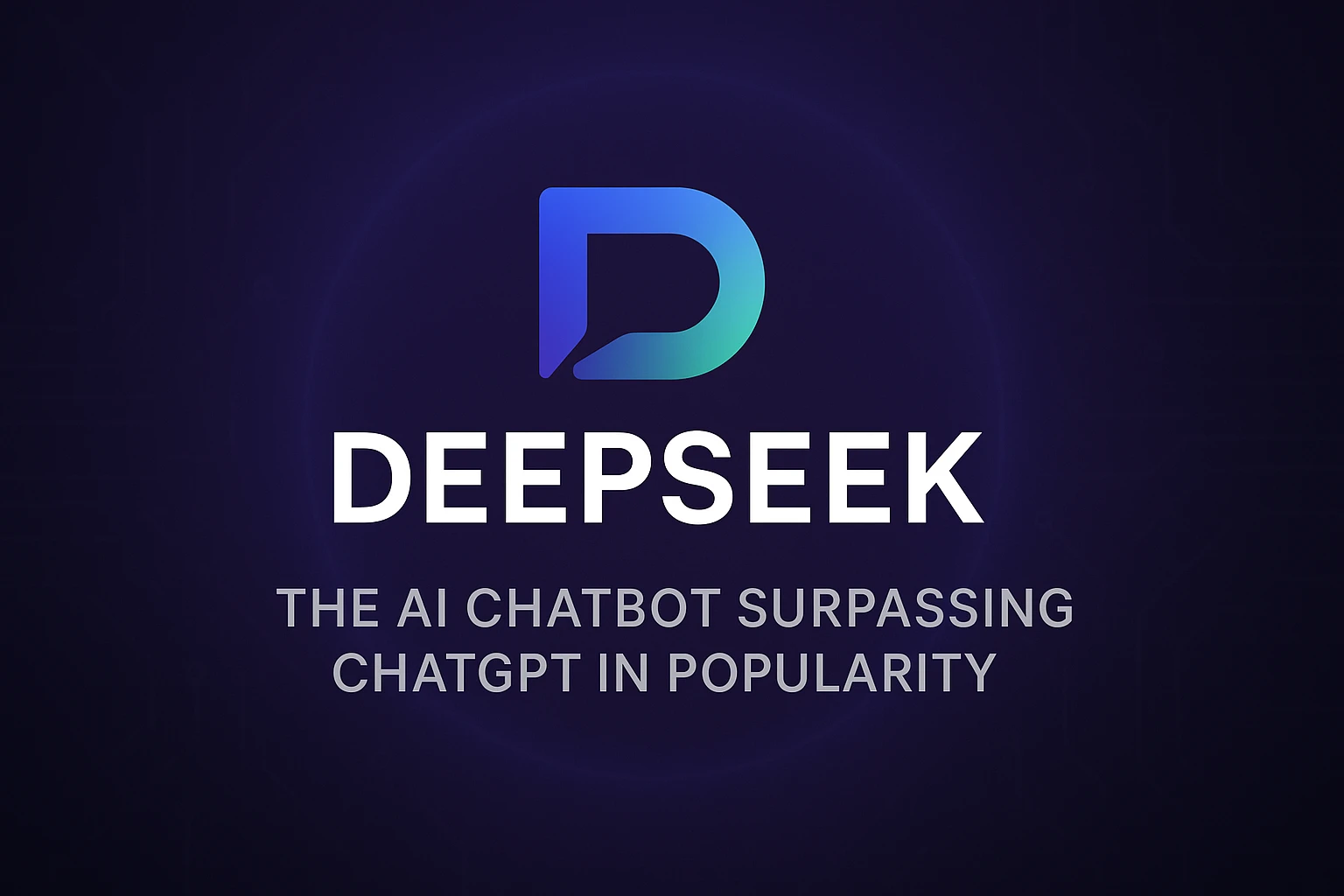Artificial intelligence continues to dominate global discussions, and in early 2025 one new name suddenly took the spotlight: DeepSeek. Launched in January 2025, this Chinese-developed chatbot rapidly climbed the charts and within days became the most downloaded free app in the U.S. App Store. Its rise sparked worldwide interest, raised questions about security, and showcased the ongoing AI race beyond Silicon Valley.
What is DeepSeek?
DeepSeek is a conversational AI chatbot developed in China, released to the public on January 10, 2025. Unlike many other AI tools, which gradually build momentum, DeepSeek exploded in popularity almost overnight. It quickly outpaced competitors like ChatGPT and Gemini, making headlines across the tech industry.
What makes DeepSeek notable is not only its conversational ability but also its underlying models, which promise faster reasoning and more efficient training compared to existing large language models. This performance, combined with its accessibility through iOS and Android, attracted millions of new users in record time.
Why Did DeepSeek Become So Popular?
There are several reasons why DeepSeek gained such massive attention so quickly. First, the app was launched during a time when AI tools are already mainstream, so public curiosity was high. Second, its positioning as a direct alternative to ChatGPT created buzz, especially with its promise of different reasoning techniques. Finally, its aggressive growth in China, followed by international expansion, gave it visibility far beyond its initial audience.
The hype surrounding DeepSeek was so strong that within weeks of launch, Nvidia’s stock dropped by more than 18%, as reported by Bloomberg and The Verge, reflecting fears that China’s AI push could reshape global competition in semiconductors and AI infrastructure.
Technical Innovations: DeepSeek-R1 and DeepSeek-GRM
The first model released to the public, DeepSeek-R1, powers the chatbot in its iOS and Android apps. It focuses on efficient inference and high-quality answers while maintaining lower computational costs compared to Western AI giants.
More recently, researchers introduced DeepSeek-GRM, a model that combines Generative Reward Modeling (GRM) with Self-Principled Critique Tuning (SPCT). This innovative training strategy allows DeepSeek to handle complex reasoning tasks with improved consistency and fewer hallucinations. By focusing on structured self-criticism and reinforcement learning, DeepSeek’s developers hope to set new standards for AI reliability.
Challenges and Security Concerns
Despite its rapid success, DeepSeek has already faced major challenges. In January 2025, shortly after launch, the platform was hit by a massive cyberattack, forcing the developers to restrict registrations. Currently, new users can only join via email, Google login, or through accounts based in China.
This incident raised concerns about security and resilience. As with many new AI tools, questions remain about how data is processed, stored, and protected, especially given the app’s origin in China. For global users, transparency and trust will be essential if DeepSeek hopes to maintain long-term growth.
How Does DeepSeek Compare to ChatGPT?
The inevitable question is whether DeepSeek can truly rival ChatGPT. While OpenAI’s ChatGPT remains more polished, especially with advanced multimodal features, DeepSeek has positioned itself as a faster, more experimental alternative.
ChatGPT emphasizes stability, broad integrations, and trust from corporate and educational sectors.
DeepSeek appeals to early adopters who want to test new reasoning models and explore cutting-edge approaches, even if that comes with risks.
In many ways, this competition reflects the broader AI race between the United States and China, with each side trying to secure technological leadership in the next wave of digital infrastructure.
Why DeepSeek Matters
DeepSeek is more than just another chatbot—it represents the globalization of AI development. Its rapid rise shows that innovation is no longer concentrated solely in Silicon Valley. With billions of dollars being invested in AI worldwide, multiple players are emerging with different strategies, architectures, and goals.
If DeepSeek continues to grow, it could become a case study in how disruptive innovation can shift market dynamics almost overnight. It also raises the stakes for regulators, companies, and users as they navigate issues of data security, transparency, and trust.
Conclusion
DeepSeek’s story illustrates how quickly the AI landscape can change. From its surprise debut to its rapid climb past ChatGPT in app store rankings, it has proven that the AI race is far from settled. Whether DeepSeek becomes a long-term competitor or a short-lived phenomenon, its impact has already been felt across global tech industries.
As we move deeper into 2025, one thing is clear: the future of AI will not be shaped by a single company or country. DeepSeek’s emergence underscores the diversity of innovation happening worldwide—and signals that the next AI breakthrough could come from anywhere.
👉 For more updates on AI and other cutting-edge technologies, explore our Technology and News sections.
